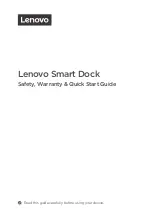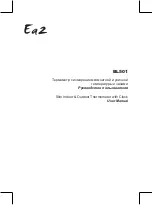
Troubleshooting: The Most Common Anemometer Problems
18
The Most Common Anemometer Problems
Note:
If the anemometer is sending no data, the wind display indicates 0 speed and a North direction.
“The anemometer head is tilted when I mount the anemometer.”
With your Allen wrench, loosen the screws holding the anemometer head on the arm.
(The screws are on the bottom of the anemometer head, by the wind cups.) Turn the
anemometer head so it is straight and then tighten the screws.
“The wind cups are spinning but my console displays 0 mph.”
The signal from the wind cups may not be making it back to the display. Remove the cups
from the anemometer (loosen the set screw shown on page 4). Put the cups back onto
the shaft and adjust them up or down 1/16 – 1/8 inch (1.5 – 3 mm). Check your cables for
visible nicks and cuts. Look for corrosion in the “WIND” jack on the SIM and on splices in
the cable (if any). If you are using an extension cable, remove it and test using only the
anemometer cable. If you still haven’t resolved the problem, contact Technical Support
and ask for a wind test cable.
“The wind direction is stuck on north, or displays dashes.”
It is likely that there is a short or break somewhere between the wind vane and the
display. Check your cables for visible nicks and cuts. Look for corrosion in the “WIND”
jack on the Sensor Interface Module and on splices in the cable (if any). If possible,
remove any extensions and try with the anemometer cable only. If none of these steps
get the wind direction working, contact Technical Support and ask for a wind test cable.
“The wind cups don’t spin or don’t spin as fast as they should.”
First check for and clear out any spider webs. Also, the anemometer may be located
where wind is blocked by something, or there may be friction interfering with the cups’
rotation. Friction usually can be remedied by the user — remove the wind cups (loosen
the set screw shown on page 4) and clear out any bugs or debris. Turn the shaft the cups
rotate on. If it feels gritty or stiff, contact Davis Technical Support. DO NOT LUBRICATE
THE SHAFT OR BEARINGS IN ANY WAY. When replacing the cups, make sure they are
not rubbing against any part of the anemometer head.
“Wind readings aren’t what I expected them to be.”
Comparing data from your ISS to measurements from TV, radio, newspapers, or a
neighbor is NOT a valid method of verifying your readings. Wind speed and direction can
vary considerably over short distances. How you site the anemometer can also make a
big difference. If you have questions, contact Technical Support.
Contacting Davis Instruments
If you have questions about your ISS or Vantage Pro Station, or encounter problems
installing or operating your weather station, please contact Davis Technical Support.
Note:
Please do not return items to the factory for repair without prior authorization.
(510) 732-7814
– Technical Support phone, Monday – Friday, 7:00 a.m. – 5:30 p.m.
Pacific Time.
(510) 670-0589
– Technical Support Fax.
support@davisnet.com
– E-mail to Technical Support.
info@davisnet.com
– General e-mail.
www.davisnet.com
– Download manuals and specifications from the Support
section. Watch for FAQs and other updates. Subscribe to the e-newsletter.





































